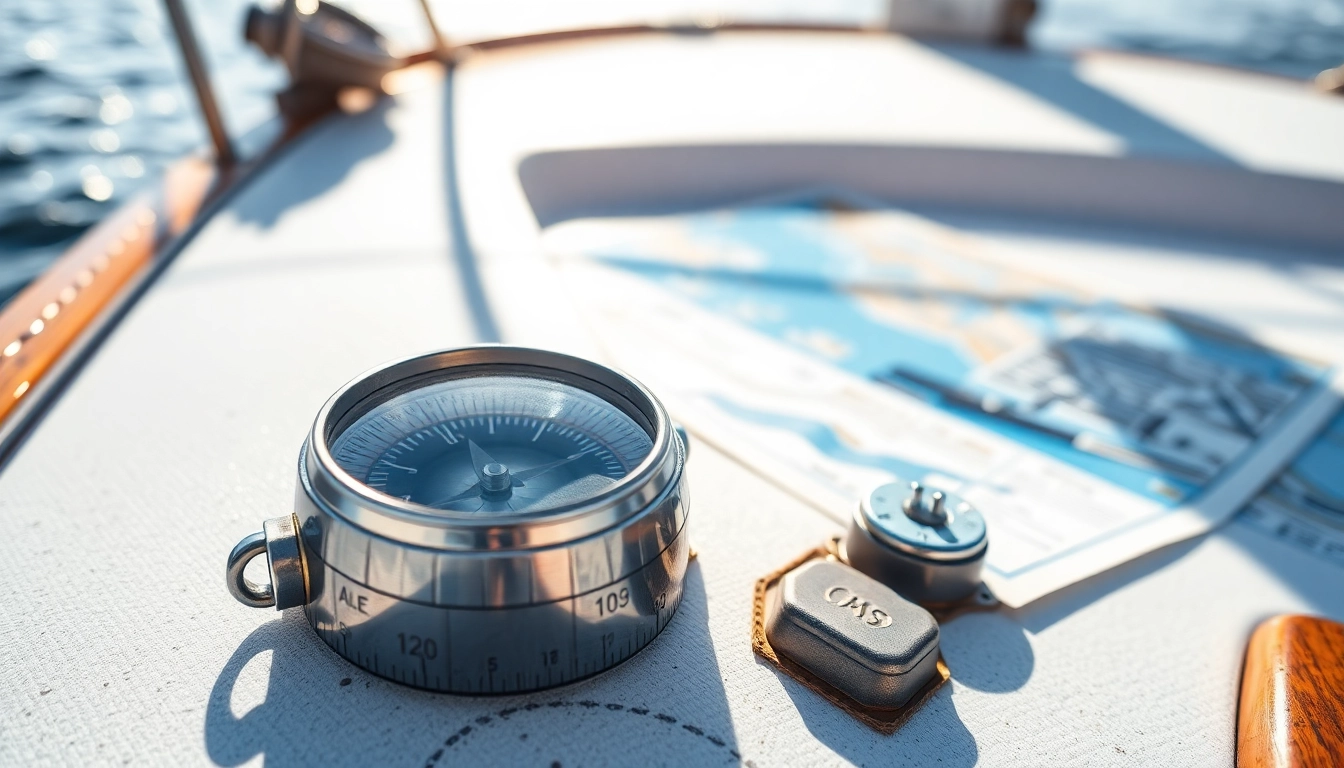Understanding the Fundamentals of Boots Versegelung
Boots versegelung, or ship positioning, is a crucial aspect of maritime navigation that ensures a vessel’s accurate placement in open water. This technique involves determining the position of a boat or ship relative to fixed points on the shoreline or prominent navigational landmarks. Mastery of versegelung is vital for safe navigation, particularly in environments where electronic systems may fail or when operating in challenging weather conditions. For those interested in deepening their knowledge, exploring comprehensive resources such as Boots Versegelung guides can provide valuable insights into traditional and modern methods.
Definition and Significance of Boots Versegelung
Versegelung is derived from the German term “Versiegelung,” meaning sealing or securing, and in the maritime context, it refers to the process of establishing a vessel’s precise location by using visual and angular data. Precise versegelung allows navigators to plot courses accurately, avoid hazards, and reach intended destinations efficiently. It combines the art of observation with mathematical calculations, serving as a cornerstone for terrestrial and celestial navigation.
Key Navigational Instruments and Procedures
Effective versegelung relies on essential navigational tools such as compasses, sextants, binoculars, and detailed charts. The most common procedure involves sighting prominent landmarks, calculating bearing angles, and plotting the position on a nautical chart. Modern electronic devices complement these traditional instruments, but understanding classical techniques remains critical for redundancy and safety.
Distinction Between Terrestrial and Electronic Navigation
While terrestrial navigation depends on visual cues and manual calculations, electronic navigation uses GPS, AIS, radar, and other digital aids. Although electronic systems have revolutionized maritime navigation with higher accuracy and ease, they are susceptible to technical failures and cyber-attacks. Therefore, traditional versegelung serves as a vital backup method, emphasizing the importance of integrating both approaches for comprehensive navigational safety.
Applying Boots Versegelung in Practice for Sailing and Motor Boating
Step-by-Step Guide to Conducting a Peilung
Performing a peilung (position fix) involves several systematic steps:
- Identify a Reference Object: Choose a prominent landmark or navigational aid visible from your position.
- Measure the Bearing: Use a compass or electronic bearing device to determine the angle between your boat’s heading and the object.
- Record Environmental Conditions: Note the weather, visibility, and any relevant sea conditions that could affect measurements.
- Plot the Bearing on Chart: Draw a line from your estimated position in the direction of the bearing on the nautical map.
- Intersect Multiple Bearings: Repeat the process from different locations to triangulate your precise position.
This method helps in cross-verifying positions, especially when navigating through areas with limited landmarks.
Common Mistakes and How to Avoid Them
Errors in versegelung can lead to miscalculations and navigation hazards. Typical mistakes include:
- Incorrect Bearing Readings: Always ensure compasses or bearing devices are calibrated and held steady.
- Misidentification of Landmarks: Use charts and visual aids to verify objects before taking measurements.
- Ignoring Environmental Factors: Adjust for magnetic declination and current influences that can distort readings.
- Inadequate Multiple Fixes: Always take multiple bearings from different positions to increase accuracy.
Application in Diverse Weather Conditions
Weather significantly impacts versegelung accuracy. In fog, heavy rain, or overcast skies, visual identification becomes difficult. In such cases, reliance on electronic aids is necessary, but seasoned navigators combine these with traditional techniques whenever possible. For instance, during foggy conditions, using a handheld compass combined with radar and AIS data provides a layered approach, minimizing the risk of wrong positioning.
Modern Technologies and Equipment for Precise Boots Versegelung
Navigational Apps and Electronic Peilgeräte
The advent of digital tools has transformed traditional navigation. Smartphone apps and dedicated navigation devices now allow sailors to plot courses, perform bearings, and receive real-time positional data seamlessly. For example, AR (augmented reality) apps can overlay navigational information directly onto live camera feeds, enhancing situational awareness.
Integrating Classical and Digital Methods
Despite digital advances, combining classical techniques with modern technology offers the best safety profile. Use electronic charts and GPS as your primary navigation tools, but always confirm your position with visual bearings or traditional sextant measurements. This redundancy ensures safety in case of technical failures.
Maintaining Instrument Accuracy for Long-Term Reliability
Proper maintenance is essential for accurate readings. Regularly calibrate compasses and electronic devices, clean lenses and sensors, and update software. Store instruments in dry, protected environments, and conduct periodic tests to ensure they function correctly. With diligent care, your gear will provide reliable data for multiple seasons.
Ensuring Safety and Precision in Boots Versegelung
Preparation and Planning for Open Water Navigation
Prior to departure, review nautical charts, weather forecasts, and tide tables. Identify potential hazards such as rocks, shallows, and navigational aids. Plot your intended route, mark waypoints, and establish alternative plans. Adequate preparation reduces the likelihood of surprises and enhances accuracy during actual navigation.
Managing High-Stress Situations
In tense scenarios, such as sudden fog or equipment failure, maintain calm and follow your training. Stick to predetermined procedures like cross-checking bearings, utilizing backup instruments, and communicating clearly with crew. Training sessions and simulations improve response times and decision-making under pressure.
Historical Navigational Errors and Lessons Learned
History is replete with mariner errors stemming from overconfidence, miscalculations, or ignoring environmental factors. The sinking of the Titanic, partly due to navigational misjudgments, underscores the importance of meticulous plotting and constant situational awareness. Modern navigation must incorporate lessons from these incidents to uphold safety standards.
Resources and Courses for Advanced Learning
Recommended Literature and Manuals
To deepen your understanding, consult authoritative texts like “Celestial Navigation” by David Burch or “Maritime Navigation: Principles and Practice.” These resources detail both traditional and contemporary techniques, providing a solid theoretical foundation.
Advanced Navigational Courses
Enroll in seminars or certification programs offered by recognized maritime institutions. Courses often include practical workshops, equipment training, and problem-solving exercises that sharpen skills necessary for complex navigation tasks.
Online Communities and Exchange Platforms
Participate in online forums such as NavAll or dedicated Facebook groups. Sharing experiences and solutions with fellow mariners fosters continuous learning, updates on industry innovations, and peer support.
